Pumping breast milk is a common practice for new mothers who are unable to breastfeed their babies directly. It is a convenient way to provide milk for the baby, especially when the mother is away from her baby for extended periods.
Many nursing mothers wonder how many calories they burn while pumping breast milk for 20 minutes and how it affects their weight management goals.
Understanding the energy expenditure involved in pumping breast milk is essential for nursing mothers who want to maintain a healthy weight and ensure their baby is getting enough milk. The amount of energy expended during pumping varies depending on several factors, such as the mother’s weight, age, and fitness level, as well as the intensity of the pumping session.
This article will explore the topic of calories burned while pumping breast milk for 20 minutes and provide helpful information for nursing mothers who want to manage their weight and maintain a healthy lifestyle.
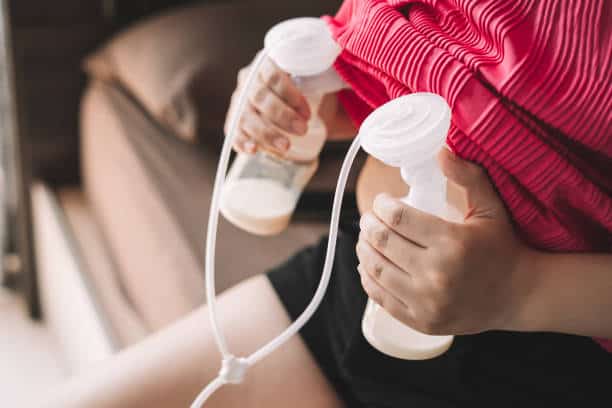
Key Takeaways
- Pumping breast milk for 20 minutes burns approximately 79-112 calories, depending on the mother’s weight and pumping intensity.
- Nursing mothers need to consume enough calories and nutrients to support breast milk production and their own energy needs.
- Maintaining a healthy weight during breastfeeding requires a balanced diet, regular exercise, and proper hydration.
1. Understanding Breastfeeding and Pumping
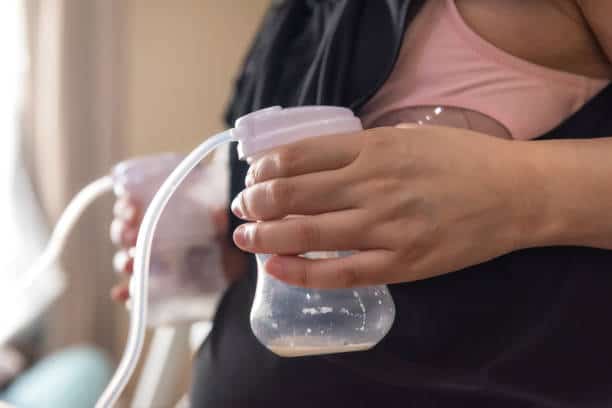
Breastfeeding is the natural way for a mother to feed her infant. It provides the baby with all the necessary nutrients and antibodies to help them grow healthy and strong.
However, there are times when a mother may not be able to breastfeed her baby directly, or she may choose to pump breast milk for various reasons.
Pumping is the process of using a breast pump to extract milk from the breasts. It can be done manually or with an electric pump.
Pumping can help a mother maintain her milk supply, relieve engorgement, and provide milk for her baby when she is not available to breastfeed.
Pumping and breastfeeding can be done together, and it can help a mother increase her milk supply. It is important to note that pumping should not replace breastfeeding entirely, as the baby benefits from the physical contact and bonding that comes with direct breastfeeding.
When a mother pumps breast milk, she burns calories just like she would if she were breastfeeding. The amount of calories burned depends on various factors, such as the mother’s weight, the length of time she pumps, and the amount of milk she produces.
On average, a mother can burn between 100-300 calories per day by breastfeeding or pumping breast milk. Pumping for 20 minutes can burn approximately 50-100 calories, depending on the mother’s weight and the intensity of the pumping.
It is important for a mother to maintain a healthy diet and drink plenty of fluids to ensure that she has enough energy and milk supply to feed her baby. Over-pumping can lead to oversupply, which can cause discomfort and other issues for both the mother and baby.
In summary, breastfeeding and pumping are both effective ways for a mother to provide milk for her baby. Pumping can help a mother maintain her milk supply and provide milk when she is not available to breastfeed.
It is important to maintain a healthy diet and avoid over-pumping to ensure a healthy and comfortable breastfeeding experience for both the mother and baby.
2. Calories and Energy Expenditure
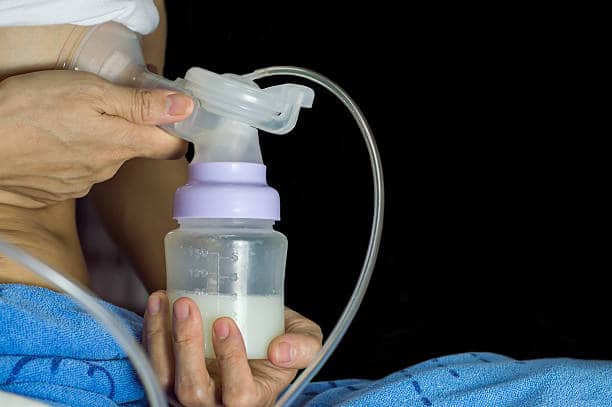
Breastfeeding is a physically demanding task that requires a significant amount of energy. Pumping breast milk is no different.
In fact, it can be even more taxing on the body since it requires the use of a machine rather than the natural suction of a baby.
When it comes to calories burned, pumping breast milk for 20 minutes can burn anywhere from 79 to 112 calories, depending on the person’s weight and activity level. This is equivalent to the number of calories burned during a brisk walk or light jog.
However, it’s important to note that pumping breast milk alone is not enough to burn extra calories and lose weight. It’s still necessary to maintain a healthy diet and engage in regular physical activity to achieve weight loss goals.
The amount of energy expended during pumping can also vary based on the person’s activity level. Sitting still and pumping will require less energy than pumping while walking or performing other activities.
Overall, while pumping breast milk can burn some calories and require energy, it should not be relied upon as a sole method of weight loss or physical activity.
3. Nutrition and Diet for Nursing Mothers

Maintaining a healthy and balanced diet is crucial for nursing mothers as it directly affects the quality and quantity of breast milk produced. A well-balanced diet that includes all the essential nutrients is essential for both the mother and the baby’s health.
Nursing mothers should aim to consume a variety of healthy foods, including lean meat, eggs, dairy products, beans, whole grains, fruits, and vegetables. These foods provide essential nutrients such as protein, iron, calcium, and vitamins, which are necessary for the baby’s growth and development.
It is important to note that nursing mothers require extra calories to produce enough milk for their babies. The extra calories required vary depending on the mother’s body weight, age, and activity level.
Generally, nursing mothers need an extra 300-500 calories per day.
Water is also essential for nursing mothers as it helps in milk production and keeps the body hydrated. It is recommended that nursing mothers drink at least 8-10 glasses of water per day.
Certain foods such as peanut butter, bananas, apples, yogurt, and lean meat are excellent sources of nutrients and can be incorporated into a nursing mother’s diet. However, nursing mothers should avoid sugary drinks and limit their caffeine intake.
It is also important to be aware of any food allergies or intolerances that the mother or baby may have. If the mother notices any allergic reactions in the baby, such as rashes or colic, she should avoid consuming that particular food.
Finally, nursing mothers should avoid alcohol and fish that are high in mercury as they can be harmful to the baby’s development. Cabbage is also known to decrease milk production in some women, so it is recommended to consume it in moderation.
In summary, nursing mothers should aim to consume a healthy and balanced diet that includes all the essential nutrients, drink plenty of water, and avoid foods that can be harmful to the baby’s development.
4. Breast Milk Production and Efficiency
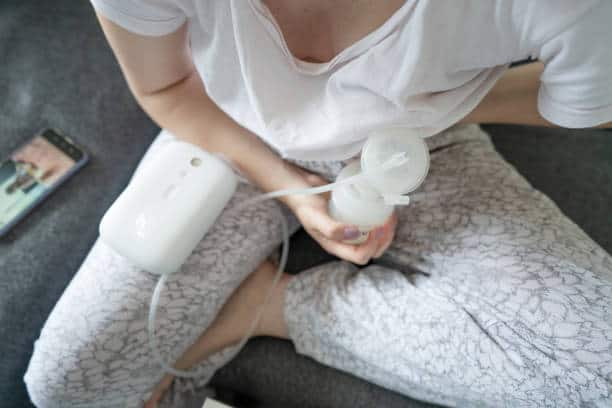
Breast milk production is a complex process that involves multiple physiological mechanisms. The average milk production for a lactating mother is around 25-35 ounces (750-1,000 milliliters) per day, but this can vary depending on factors such as the baby’s age, frequency of breastfeeding, and maternal health.
When a mother pumps breast milk, the efficiency of milk production can be affected. Research has shown that milk production is highest in the morning and gradually decreases throughout the day.
Therefore, pumping breast milk in the morning may yield more milk than pumping later in the day.
The amount of milk produced during a pumping session can also vary depending on the duration of the session. A study by the American Academy of Pediatrics found that mothers who pumped for 20 minutes yielded an average of 83 milliliters (2.8 ounces) of milk per breast.
However, some mothers may produce more or less milk during a pumping session.
It’s important to note that milk production efficiency can be affected by various factors such as stress, fatigue, and dehydration. Therefore, it’s crucial for lactating mothers to prioritize self-care and stay hydrated to maintain optimal milk production.
In summary, breast milk production is a complex process that can be affected by various factors. Pumping breast milk for 20 minutes can yield an average of 83 milliliters (2.8 ounces) of milk per breast, but milk production efficiency can vary depending on factors such as the time of day and maternal health.
5. Weight Management during Breastfeeding

Breastfeeding is a natural process that provides numerous benefits to both the mother and the baby. It is a great way to bond with the baby and also helps in the baby’s growth and development.
It is also known to help mothers lose weight gained during pregnancy.
One of the main benefits of breastfeeding is that it can help mothers lose weight gained during pregnancy. Breastfeeding burns calories, and the more milk a mother produces, the more calories she burns.
On average, breastfeeding mothers burn around 500 calories per day, which can help them lose weight.
However, it is important to note that losing weight too quickly can be harmful to both the mother and the baby.
Rapid weight loss can cause a decrease in milk supply, which can negatively affect the baby’s growth and development.
It is recommended that breastfeeding mothers aim to lose no more than 1-2 pounds per week.
In addition to breastfeeding, mothers can also incorporate healthy eating habits and exercise to aid in weight loss. It is important to consume a well-balanced diet that includes plenty of fruits, vegetables, lean protein, and whole grains.
Exercise can also help in weight loss and can be beneficial for both the mother and the baby.
Mothers should also keep in mind that weight loss may not happen immediately, and it can take time for the body to adjust to the changes that come with breastfeeding. It is important to be patient and to focus on overall health and well-being rather than just weight loss.
Overall, breastfeeding can be a great way to aid in weight loss for mothers. However, it is important to do so in a healthy and sustainable way that does not negatively affect the baby’s growth and development.
6. Health Issues and Breastfeeding

Breastfeeding is a natural and healthy way to feed a baby. It provides many benefits for both the mother and the baby. However, there are some health issues that can arise when breastfeeding.
Diabetes
Mothers with diabetes may have difficulty producing enough milk for their baby. They may also experience high blood sugar levels, which can affect the quality of their milk.
It is important for mothers with diabetes to monitor their blood sugar levels and work closely with their healthcare provider to manage their condition.
Surplus
Mothers who produce an oversupply of milk may experience discomfort, engorgement, and even infection. It is important for these mothers to find ways to manage their milk supply, such as pumping or expressing milk, to avoid these issues.
Overall, breastfeeding is a safe and healthy way to feed a baby. However, it is important for mothers to be aware of these health issues and work closely with their healthcare provider to address any concerns.
7. Estimating Calories Burned during Pumping
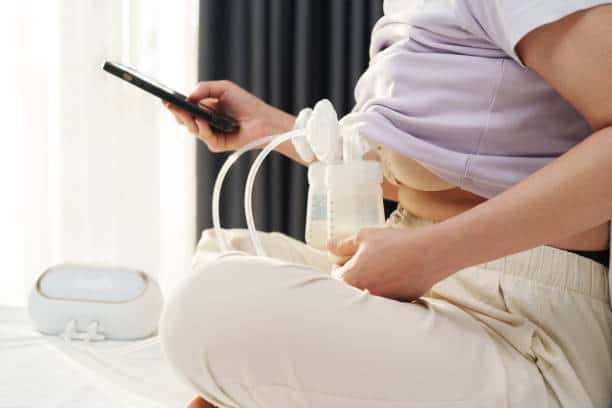
Many new mothers wonder how many calories they can burn while pumping breast milk. The answer is not straightforward, as several factors can influence the number of calories burned during a pumping session.
However, there are some general estimates and guidelines that women can use to get an idea of how many calories they might be burning.
According to La Leche League International, a non-profit organization that provides breastfeeding support and education, breastfeeding mothers can burn an average of 500 to 600 calories per day. This estimate includes the calories burned during pumping sessions, as well as the calories burned by the body to produce milk.
However, it is important to note that this is an average, and individual results may vary.
To estimate the number of calories burned during a pumping session, women can use online calculators or fitness trackers. These tools can help calculate the number of calories burned based on factors such as weight, age, and activity level.
However, it is important to keep in mind that these estimates are just that – estimates. The actual number of calories burned during a pumping session can vary depending on factors such as the intensity of the session and the individual’s metabolism.
It is also important to note that the number of calories burned during pumping sessions should not be used as a weight loss strategy. Breastfeeding mothers need to consume enough calories to maintain their milk supply and support their own health and energy levels.
Restricting calorie intake can negatively impact milk production and overall health.
In summary, estimating the number of calories burned during pumping sessions can be challenging, as several factors can influence the results. However, women can use online calculators or fitness trackers to get an idea of how many calories they might be burning.
It is important to remember that the number of calories burned during pumping sessions should not be used as a weight loss strategy, and that breastfeeding mothers need to consume enough calories to support their milk supply and overall health.
8. Growth and Development of the Infant
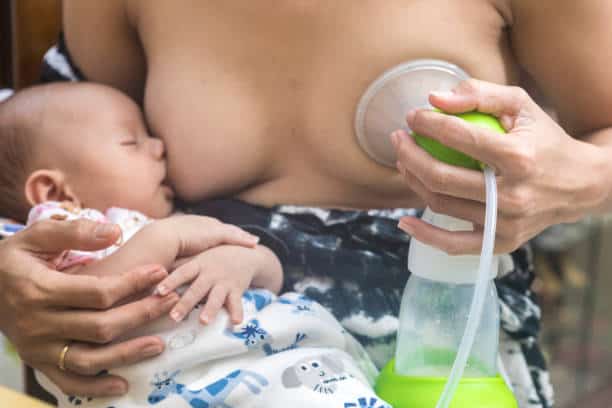
Breast milk is the optimal source of nutrition for infants, providing all the necessary nutrients for growth and development. The composition of breast milk changes over time to meet the evolving needs of the growing infant.
During the first few days after birth, breast milk is rich in colostrum, a yellowish fluid that contains high levels of protein, antibodies, and other immune factors. Colostrum helps to protect the newborn from infection and provides essential nutrients for growth.
As the infant grows, the composition of breast milk changes to provide more fat and calories. This is important for supporting the rapid growth and development that occurs during the first few months of life.
Cluster feeding, where the infant feeds frequently over a short period of time, is common during the first few months of life. This helps to stimulate milk production and ensure that the infant receives enough milk to support growth.
Overall, breast milk is an essential component of infant growth and development. It provides all the necessary nutrients for optimal growth and development, and helps to protect the infant from infection and other health problems.
Frequently Asked Questions
How many calories does breastfeeding burn?
Breastfeeding can burn anywhere from 300 to 500 calories per day, depending on the frequency and duration of feedings. This is because the body uses energy to produce milk and to support the metabolic processes involved in lactation.
How many calories do you burn breastfeeding a 6 month old?
Breastfeeding a 6 month old can burn around 330 to 400 calories per day, on average. However, this can vary depending on factors such as the baby’s weight and feeding schedule, as well as the mother’s metabolism.
How many calories do you burn breastfeeding a 1 year old?
Breastfeeding a 1 year old can burn around 300 to 380 calories per day, on average. However, this can vary depending on factors such as the baby’s weight and feeding schedule, as well as the mother’s metabolism.
How many calories does breastfeeding burn NHS?
According to the NHS, breastfeeding can burn around 330 to 500 calories per day, depending on the frequency and duration of feedings. This can help mothers to lose weight and maintain a healthy body weight.
How much weight can you lose pumping breast milk?
The amount of weight that can be lost by pumping breast milk depends on various factors, such as the frequency and duration of pumping, the mother’s diet and exercise habits, and the baby’s feeding schedule. However, it is generally recommended that mothers aim to lose weight gradually and safely, rather than trying to lose weight quickly.
Does pumping burn as many calories as breastfeeding?
Pumping breast milk can burn fewer calories than breastfeeding, as the baby’s sucking action can help to stimulate the mother’s metabolism and increase energy expenditure. However, pumping can still burn a significant amount of calories, especially if done frequently and for extended periods of time.

Iesha is a loving mother of 2 beautiful children. She’s an active parent who enjoys indoor and outdoor adventures with her family. Her mission is to share practical and realistic parenting advice to help the parenting community becoming stronger.
